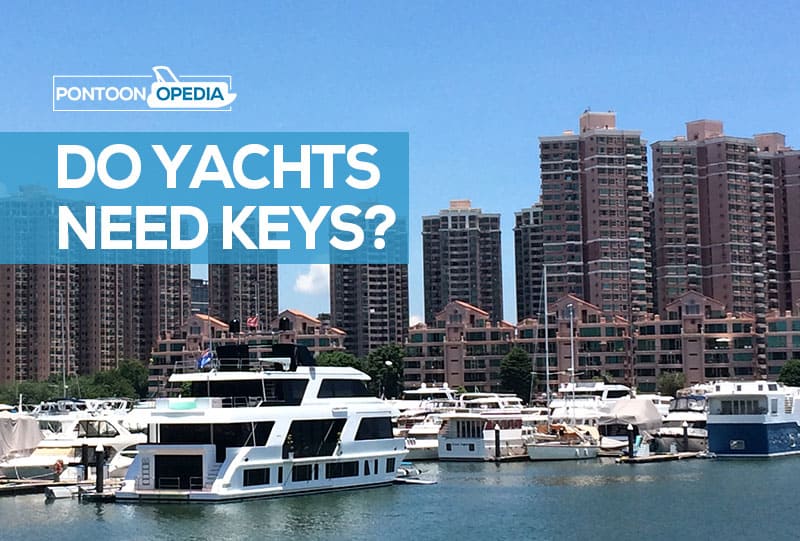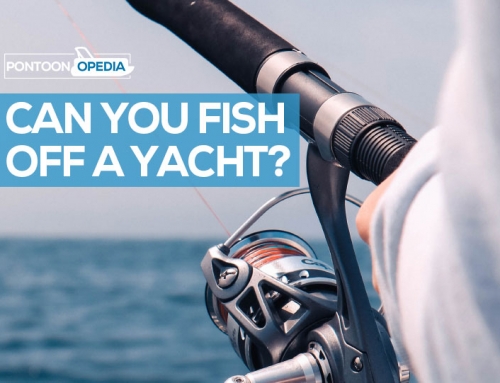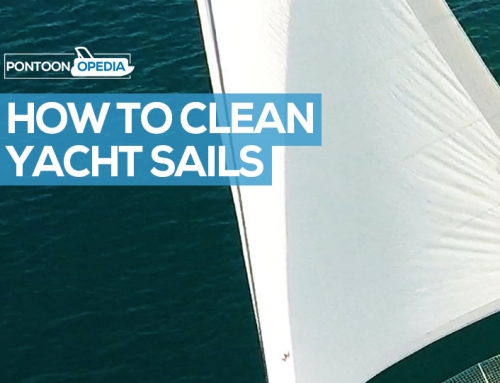Many people will spend time daydreaming about what it would be like to own a yacht, and actually it has become a little more affordable with certain charter companies. It’s still expensive though!
There is one question that people new to chartering will often ask, and that’s whether yachts take keys?
Do yachts need keys? Most yachts will have either a push button start or an air start system and so will not need keys. However, you will need keys to open the door to the area that controls the yacht.
Yachts are fascinating, and complex, but you can learn to sail them quite quickly with a decent instructor. Before you go and book a lesson though, here are some pointers on the mechanics of how to start a yacht as well as other interesting facts about these floating palaces of the seas.
Table of Contents
How to start a yacht (without a key)
As technology advances, so do the systems on a yacht, including ignition. There are two main ways to start a yacht:
- Push Button Start
- Air Start
1. Push button start
The push button start on a yacht will consist of the following:
- Ignition coil
- Distributor
- Ignition amplifier
- Spark plugs
- Wires
The push button start is also called an HEI ignition system. The distributor contains a magnetic sensor. As the button is pushed the rotor turns, and a magnetic connection is open and closed, creating a break in the current which causes the ignition coil to output stored energy. This is helped by the ignition amplifier.
That stored energy makes its way to the spark plugs. Spark plugs provide the internal spark, sometimes via wires, to cylinders, causing combustion of the air/fuel mixture and the starting of the yacht engine.
2. Air start
An air start engine is normally seen on larger yachts. It starts the engine from a standstill or stop position. The air starter valve is fitted at the center of each cylinder head and controls the air supply to the combustion chamber.
The air starter valve is the heart of the operation and contains these parts:
- Grooved ports
- Spindle
- Balancing piston
- Valve closing spring
- Operating piston
- Combustion chamber
- Top cover
The air is introduced into the chamber just above the valve and the seat via the grooved ports in the valve body. The spring and the balancing piston help in keeping the valve lid shut until a balance is achieved.
Air is then pushed in through the top of the valve body, overcoming the spring force and opening the valve. Opening the valve leads to the high-pressure air entering the combustion chamber and moving the operating piston up and down.
No more air pressure on top of the valve means no movement of the operating piston. When the operating piston moves, the engine starts. When the operating piston doesn’t move, the engine doesn’t start.
With these two ignition types, you can see why yachts, especially the newer and bigger models, choose the air starter ignition system over the push button start ignition system – and why yachts don’t need keys!
The push button start relies on a spark to create the process of moving the pistons, while the air starter system relies on air to move the pistons. If you’re on a large boat in the middle of the sea, you want to minimize the use of sparks anywhere near your yacht.
Other things needed to start a yacht
Yachts, at their very essence, are big boats. No matter how complex or large the engines are, most marine engines still operate due to four basic components:
- Fuel
- Air
- Compression
- Exhaust
If any of these items are missing or damaged, the engine is not going to start. Let’s go over them.
1. Fuel
Two types of fuel are normally used in yachts:
- Marine Gas Oil (MGO)
- Marine Diesel Oil (MDO)
Marine gas oil is made of a blend of light cycle gas oil and aromatics. It might contain waste products like used motor oil.
Marine diesel oil is totally different from the diesel oil used to power your large truck. MDO will definitely use heavy fuel oil in the composition and a blend of distillates.
MGO has a lower use of heavy fuel oil, while MDO has a higher use of heavy fuel oil. As with cars and trucks, the type of engine you have will depend on the type of fuel you use.
2. Air
Obviously, you need air if you have a large yacht using an air starter engine. But even push button starts need air for the ignition.
On a yacht engine with push button starts, you will want to have a blower on about three or four minutes before you try to start the yacht. The blower will blow out the gas fumes from around the engine.
If you don’t blow out the gas fumes before starting the engine, the gas fumes could accumulate. When the spark plug ignites, it could cause those fumes to explode, resulting in, at the very least, an engine that now needs repairing.
3. Compression
As the piston travels up and down the cylinder, the air/fuel mixture needs to be compressed at the top of the cylinder so the spark can ignite it. If you don’t have that compression, the engine will not run well and may not run at all.
With any combustion engine, the power comes from the piston moving upward in the cylinder. Compression helps drive the piston back down and then the process repeats itself. A well-run engine depends on those pistons moving in an up and down manner at a specific rate and sequence so that other engine parts can follow their design.
4. Exhaust
Any type of fuel driven engine needs an exhaust system to operate safely. You have to pump the exhaust gases away from the engine, so it doesn’t accumulate and cause explosions or problems to the engine.
Problems with a poorly designed wet exhaust system for boats can create situations where the engine needs to be repaired or even rebuilt so an exhaust system for a yacht’s start-up is crucial.
Here are some basic issues needed for a wet exhaust system for a yacht:
- Needs to be safe for both personnel and the engine
- Needs to last a long time
- Must meet manufacturers requirements for back pressure
- Must meet manufacturers requirements for water entry
- Must fit boat so that water will never flood the engine
Most people don’t think of the exhaust system when they think of the yacht’s ignition system but it is a vital component of the overall yacht ignition process.
Yacht types
Most experts define a yacht as a boat at least 33 feet in length. A superyacht is normally thought of as over 131 feet in length. Most yachts have living quarters below the hull. Some even have trio-levels, with flybridges on top of the hull and living spaces on the main deck and below the hull.
Handy Hint: For more information on how boats and yachts can differ in size, read this guide which explains the key differences.
There are many different types of yachts, including:
- Express Yachts: Have a single deck above the hull and living quarters below the hull
- Sedans: Has an area on top of the structure with 360-degree views, as well as control station and lounging spaces; living quarters are below the hull
- Motor Yachts: Multi-deck vessel with large interior main deck; living quarters below deck
- Mega Yachts: Normally has 2 or more decks above the hull, with lounging areas and enclosed decks. There are also living quarters below the hull
- Convertibles: Able to convert to a fishing or a cruising yacht, as needed; has living quarters below the hull
Final thoughts…
Keys are normally needed on a yacht only to open doors. You want your yacht to be secure, after all, when it is moored. For the smaller yachts, a push button ignition will suffice. Larger yachts will utilize air start engines. If you’re thinking of purchasing a yacht, there is a type available for you.
Yachts are super glamorous and part of a jet set lifestyle. Here are some more articles that talk about the features of yachts.






